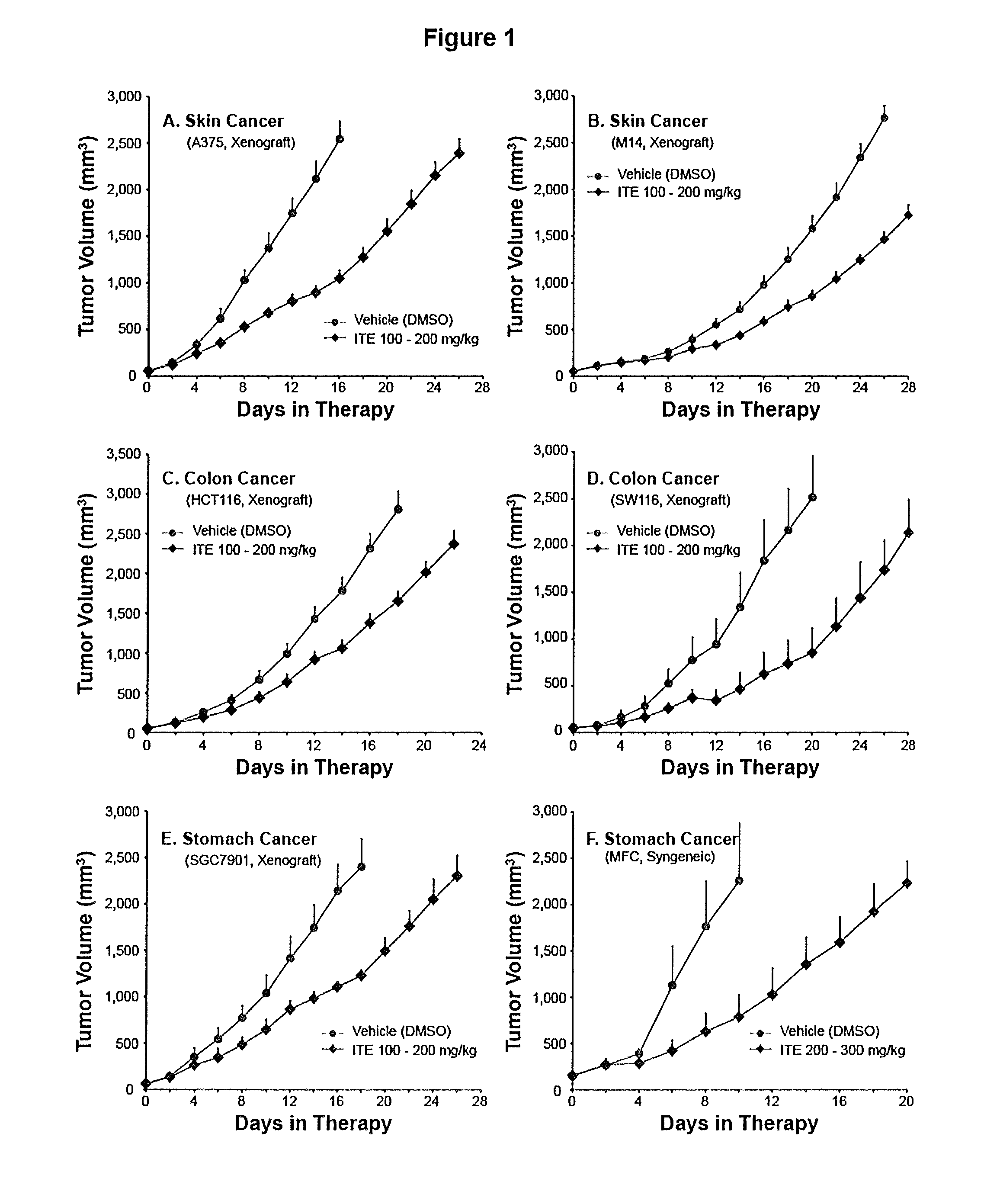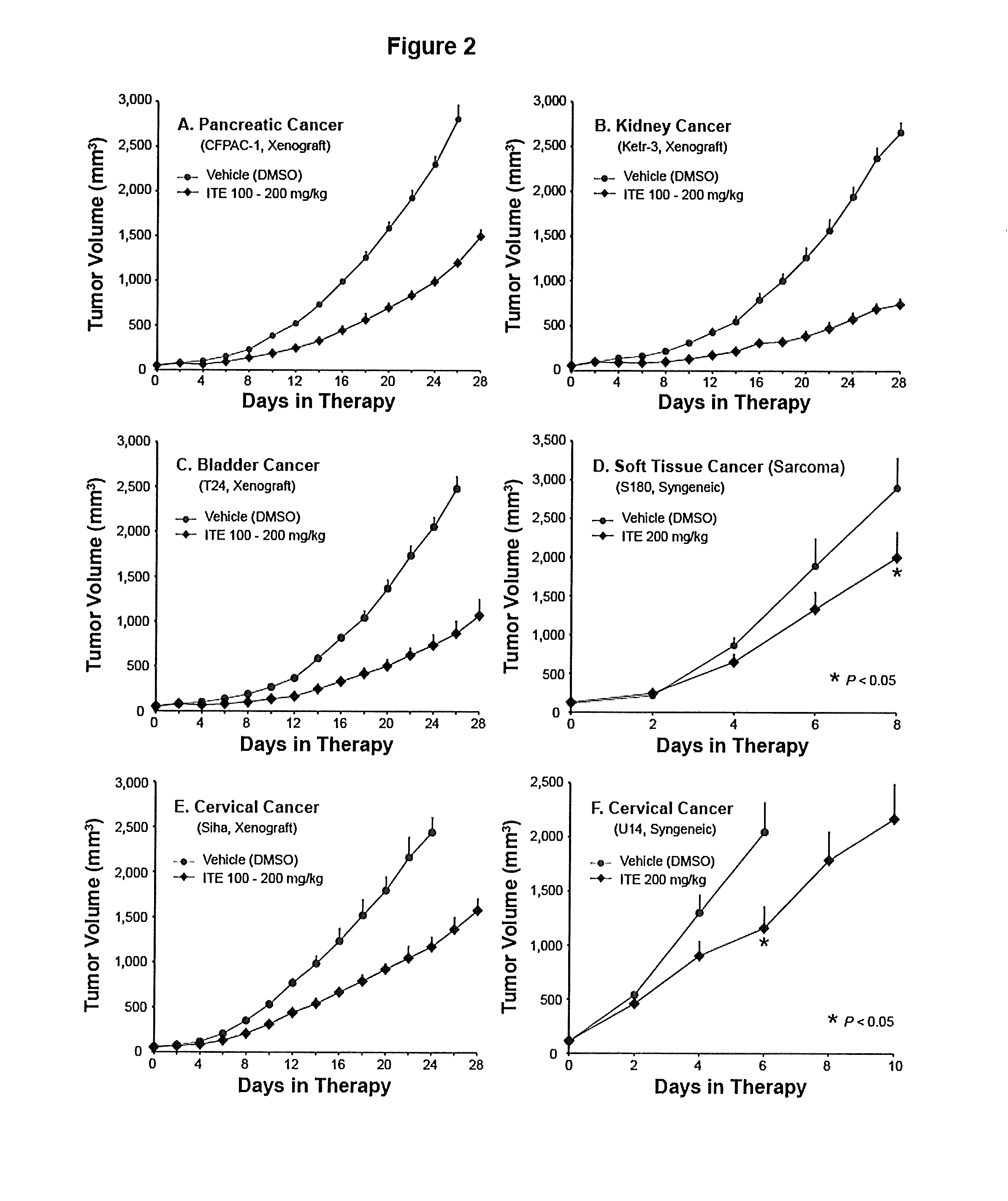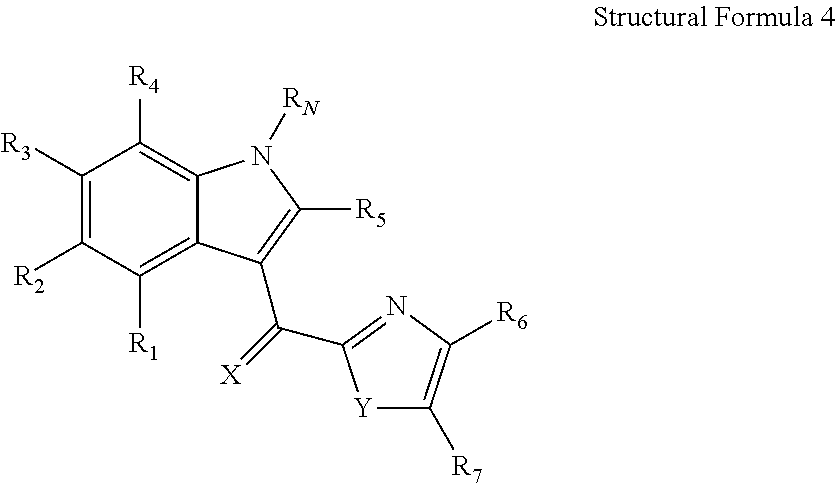Method of Cancer Treatment with 2-(1H-Indole-3-Carbonyl)-Thiazole-4-Carboxylic Acid Methyl Ester
a cancer treatment and carboxylic acid technology, applied in the field of cancer treatment using 2(1 ′ hindole3 ′carbonyl)thiazole4carboxylic acid methyl ester, can solve the problems of inability to predict meaningfully what a newly identified ligand for ahr might do in terms of cancer biology, side effects and toxicity, and impossible to fully understand the physiological role the system plays
- Summary
- Abstract
- Description
- Claims
- Application Information
AI Technical Summary
Benefits of technology
Problems solved by technology
Method used
Image
Examples
examples
[0067]Examples from animal studies will further help the embodiment of the present invention. Use of orally administered water, in addition to normal water drinking, to alleviate ITE dosing complication and use of ITE in inhibiting growth of cancers originated from varieties of organs in both human and mouse will be demonstrated.
[0068]Materials
[0069]Female BALB / c nude mice were supplied by Shanghai SLAC Laboratory Animals, Co. Ltd. (Shanghai, China). Female ICR mice were purchased from Shanghai Sippr-BK Laboratory Animal Co. Ltd. (Shanghai, China). Female 615 mice were from Institute of Hematology, Chinese Academy of Medical Sciences (Tianjin, China). Mice of 6 to 8 weeks of age were individually marked and coded. The animals were kept in laminar flow rooms at a constant temperature of 20 to 25° C. and humidity of 40 to 70%. The bedding material was corn cob, which was changed twice weekly. Animals had free access to sterile dry granule food and sterile drinking water during the ent...
PUM
| Property | Measurement | Unit |
|---|---|---|
| particle size | aaaaa | aaaaa |
| humidity | aaaaa | aaaaa |
| temperature | aaaaa | aaaaa |
Abstract
Description
Claims
Application Information
 Login to View More
Login to View More - R&D
- Intellectual Property
- Life Sciences
- Materials
- Tech Scout
- Unparalleled Data Quality
- Higher Quality Content
- 60% Fewer Hallucinations
Browse by: Latest US Patents, China's latest patents, Technical Efficacy Thesaurus, Application Domain, Technology Topic, Popular Technical Reports.
© 2025 PatSnap. All rights reserved.Legal|Privacy policy|Modern Slavery Act Transparency Statement|Sitemap|About US| Contact US: help@patsnap.com



